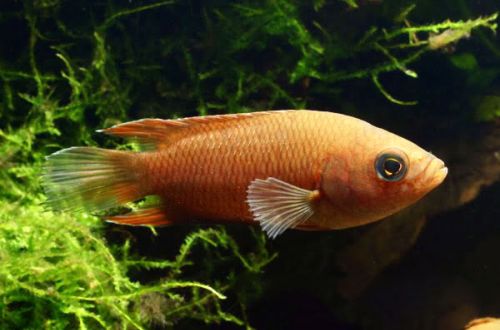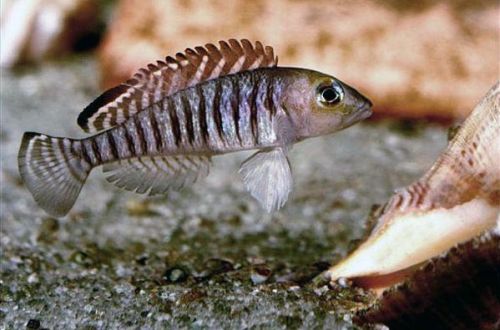
mustachioed char
Whiskered charr, scientific name Barbatula barbatula, belongs to the Nemacheilidae (charr) family. It is found throughout Europe, including the Baltic countries and Central Russia. Inhabits various biotopes with clean water rich in oxygen. These are primarily fast streams, but can also be found in the lower reaches of rivers and lakes.

Does not apply to popular aquarium species. The fish is better known among fishermen and then as bait. However, it is sometimes kept in home aquariums.
Description
Adult individuals reach a length of about 10–12 cm. The body is elongated and slender with a large head. The fins are rounded and slightly serrated at the edges. Near the mouth are three pairs of sensitive antennae. The color is yellow-brown with a pattern of dark spots and irregularly shaped specks.
Sexual dimorphism is weakly expressed. There are no clear visible differences between male and female.
Behavior and Compatibility
In spacious tanks, it gets along with relatives and other species of comparable size. By nature, it leads a secretive lifestyle, so an overly active or unfriendly fish will make the Whiskered Char even less noticeable. Good companions will be other river fish, as well as goldfish, koi, etc.
Brief information:
- The volume of the aquarium – from 100 liters.
- Temperature – no higher than 23°C
- Value pH — 7.0–7.5
- Water hardness – medium hardness (10-15 dGH)
- Substrate type – any
- Lighting – any
- Brackish water – no
- Water movement – moderate
- The size of the fish is 10–12 cm.
- Food – any sinking food
- Temperament – peaceful
- Keeping in a group of 3-4 individuals
Maintenance and care, arrangement of the aquarium
The optimal size of the aquarium for 3-4 fish starts from 100 liters. In the design, it is recommended to provide places for shelters made of large stones and snags. The presence of plants is not essential. Similar conditions must be provided when kept in a pond.
A comfortable environment is slightly alkaline (or neutral pH) water of medium hardness with a temperature not exceeding 23 ° C.
Maintaining an aquarium is no different from keeping tropical fish. It is necessary to replace part of the water weekly with fresh water and remove organic waste (feed leftovers, excrement). Both procedures are usually combined during the cleaning of the soil with a siphon. Prevention of equipment should be carried out according to the manufacturer’s instructions.
Food
Adapts to alternative foods such as sinking flakes and pellets. Feed in the evening shortly before the lights are turned off, as this species is most active at dusk.





